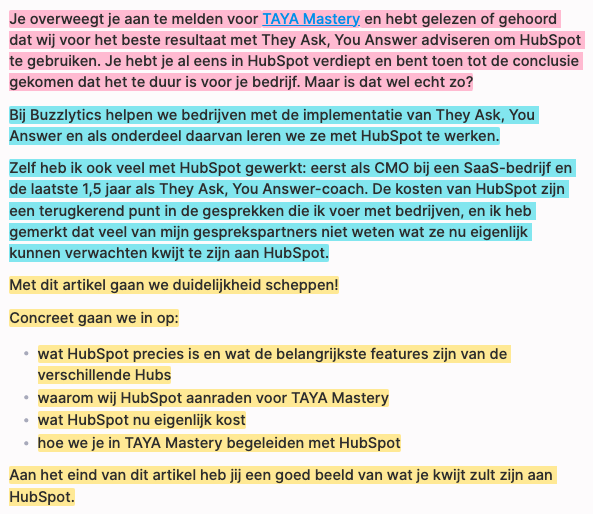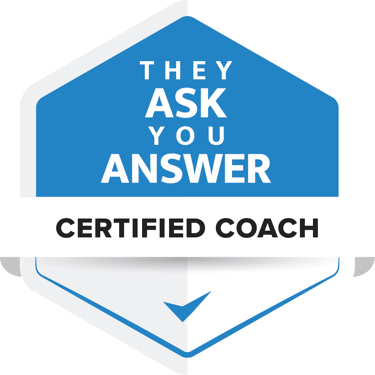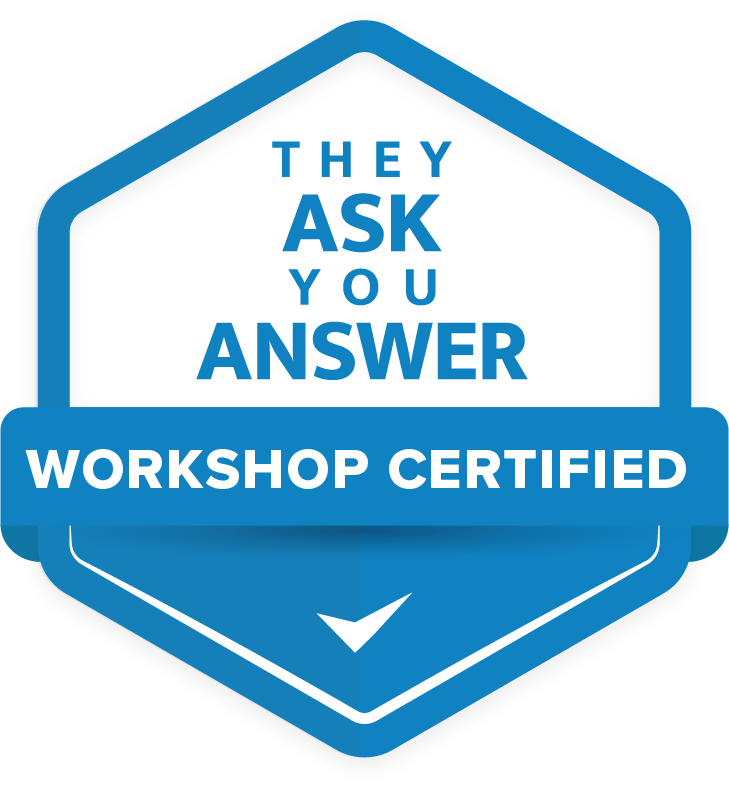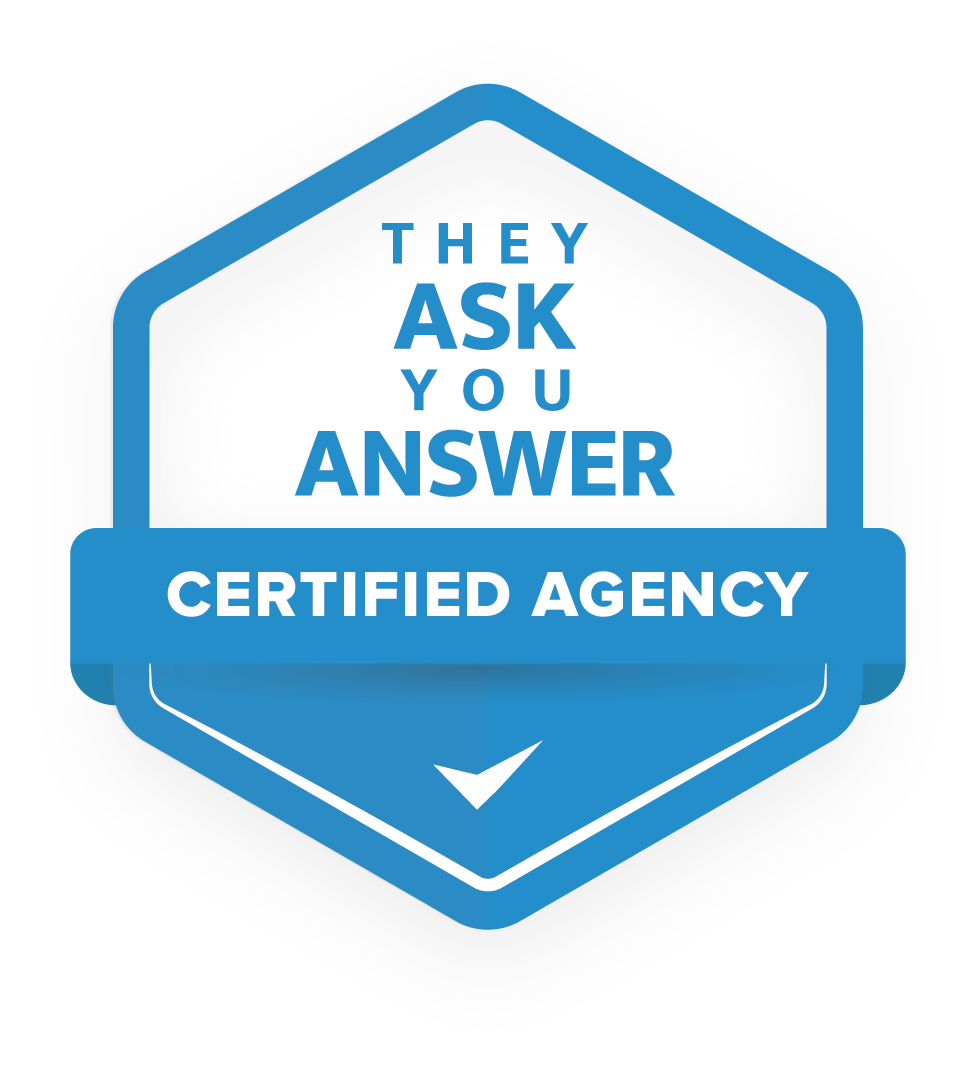How do you write a blog that generates traffic, leads and sales? [proven method]

Writing a good blog can be quite intimidating. Especially if you have little experience with this or have not yet developed an established process for it.
Pfoeh, go figure!
As a content manager, I have years of experience writing blog posts that score in the search engines and add value for the reader. I've been in your shoes and also struggled with the questions you're struggling with right now.
At Buzzlytics, I learned a process for writing blog posts that helps me write faster and also makes for more effective blog posts.
In this article, I'm going to teach you this process as well. You can use it when you write blog posts under your own name, as well as when you write as a ghostwriter for content experts.
We start by choosing the right topic. Then I'll show you how to use the They Ask, You Answer content compass to organize your thoughts and get from there quickly to a first draft.
Then we'll get into writing the blog itself.
After reading this article, you'll know exactly how to write a blog post that truly resonates with your target audience and presents yourself as an authority that people want to do business with.
Are you ready? Here we go.
1. Determine your topic
In an ideal world, you would do the following: you would create a documented content strategy with an editorial content calendar filled with the Big 5 blog topics for business blogging.
But let's assume for a moment that's not the case. Let's say you're still working on getting that content strategy done.
Then your first step for writing a blog post is: determining what you are going to write about.
Because your time is precious, you want to focus first on the topics that make the most money:
We affectionately call these 5 topics the Big 5, because these are the blog topics guaranteed to generate the most traffic, leads and sales for a business.
If you're having a hard time deciding on a specific topic, here are some "prompts" for each category to get you started. And if that's not enough, you can also use this handy blog title generator from IMPACT+.
Prices and costs
Problems
Equations
Reviews and best in class
Subject determined? Great! Now it's time to move to the next step: creating a content plan.
2. Create a content plan with the They Ask, You Answer content compass
Do you find it difficult to write an introduction that really resonates with your ideal reader? Are you unsure what to cover and what not to cover in your article? Or are you wondering how best to portray yourself or the expert on whose behalf you are writing as an authority?
With the They Ask, You Answer content compass, such struggles are forever a thing of the past.
You fill it out before writing (and possibly interviewing), answering these four questions:
It looks deceptively simple, I know.
And maybe you secretly think to yourself: hello, I've been writing for years, I don't need such a completed content compass at all.
That's what I thought myself when I first saw it. 'Nice little model, but that's not going to work for me.' Until I started working with it and something magical happened. Now I use it for all the content I create.
But before I delve deeper into the content compass, it's important to name what problem the content compass actually solves. Because chances are good, very good, that your content also has that problem. And that's costing you customers.
Why you need a completed content compass
They Ask, You Answer, the framework we use at Buzzlytics is essentially about answering customer questions in your content.
Many companies think they're already doing that, but then when we take a closer look at their content, we often see a poor response to a customer's question.
In our experience, these are the three most common ways this happens:
How the content compass solves this problem
The content compass - a 30-minute or less exercise - prevents you from falling into any of these three pitfalls by mentally orienting you in the right direction before you begin writing your blog article.
It helps you quickly develop a deep understanding of WHO is asking the question and WHAT exactly this person needs from you.
This allows you to know exactly WHY you are the right person to tell him more about that particular topic (and what exactly you have to share with him from your background) and exactly HOW you are going to help him.
But you'll only succeed at this if you answer each question in the content compass in a specific order - WHO, WHAT, WHY and HOW - in exactly the way I'm about to show you.
And believe me, this seemingly simple exercise works like a charm. I use it to organize my thoughts before writing an article, as well as to prepare for my interviews with content experts.
Sometimes you think you and the expert you're going to interview have the same idea about a blog post and find out after writing the first draft that he was expecting a different blog post (true story!).
You can avoid this by filling out the content compass and sharing it with your content expert before you do the interview.
Below I go into detail on how to fill out the content compass.
Content Compass Step 1: Answer the WHO question
The purpose of answering this question is not only to get basic information, such as his title and role, about the person for whom you are writing, although this kind of information is also very important.
But in addition, you want to determine and document very precisely how this person is feeling at the time he asks the question.
So in addition to the basic questions about your ideal client, ask yourself:
Your buyers don't want to hear about your big ideas or scintillating solutions. They want to be seen, heard and understood, and they want you to help them.
And you can only do that by thoroughly answering the WHO question.
This first question always helps me get in "the zone. I try to imagine who is asking the question: is it a business owner? A sales representative? A content manager who has the same struggles I've had?
And why is this person asking this question at this time? What stage of the customer journey is he at? Is he still at the very beginning and thus still orienting himself? Or is he about to decide on our offer? These kinds of questions are very decisive for the direction you choose for your article.
To give an example, from conversations with potential customers who ask us about the cost of HubSpot, for example, we know that they don't simply want to know if HubSpot costs (they can also read this on HubSpot's own website). They mainly want to know if HubSpot is not too expensive for them and which package of HubSpot they need for TAYA Mastery.
So we didn't write a generic article about HubSpot's costs, but one that specifically addresses these questions. We could only do that because we know from our conversations with customers the context in which they ask this question.
Example of an answer to the WHO question:

Content Compass Step 2: Answer the WHAT question
How would your ideal client phrase his question to you in his own words? What follow-up questions would he have? What objections might he raise and in what order?
Keep this imaginary conversation in your mind, but completely ignore the answers you give him. Focus only on what he would say to you.
Again, in his words.
So close your eyes - literally close your eyes. Imagine him sitting there in front of you and LISTEN to him.
Again, we illustrate this using our own example:
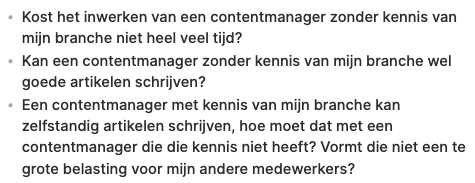
Content Compass step 3: Answer the WHY I question
The ideal buyer who stumbles upon your article may have never met you before. That means you have to somehow demonstrate very quickly through your content that you are the right person to answer a particular question.
What your ideal buyer is actually asking you here is, "Why should I trust you to be the one to help me with this particular question?".
Have you been a seasoned expert in your field for a long time? Have you helped many people like your ideal client? What specific stories, anecdotes and experiences do you have that relate to the question you are answering? Have you ever been in your ideal client's shoes? Do you know exactly how he feels right now? If you're a content manager writing on behalf of a content expert, you'll naturally answer these questions for your content expert.
Example:

Note: As a content manager, you often write on behalf of a content expert (ghostwriting). In that case, of course, you also fill out the content compass on behalf of this person and their name will appear above the article.
Content Compass step 4: Answer the HOW question
Now that you know who you are writing for, what specifically this person wants to know from you and why you are the one who can answer their question, the question is how you can help them with your content.
The point of answering this question is not to create an outline. Rather, think of it as a loose table of contents. "Now that I know who, what and why, what are the things I need to cover in my article and in what order?"
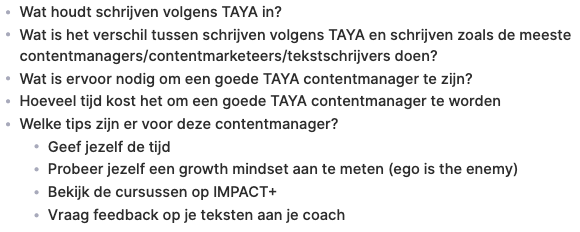
You're there! Now list all the questions one by one in a Google Doc or Word file that you title "Content Compass (make a copy)" and set the file to "read only. Every time you go to write an article, make a copy and fill in the content compass.
If you are not the content expert yourself, it is a good idea to have the content compass checked and completed by the content expert on whose behalf you are writing. That way, both of you are well prepared for the interview and you can be sure that you are on the same page. Can't manage to do this prior to the interview? Then do it at the beginning of the interview. Even if you have already discussed the content of the content compass beforehand, it helps to touch on the content at the beginning of the interview, so that you both have a clear idea of what you are going to talk about.
You'll soon find that your work gets a lot better when you fill out the content compass and that writing articles will come much easier to you. Below I show you how the content compass helps you write your article.
3. Write the introduction
At Buzzlytics, we teach our clients the PEP method for writing blog posts. PEP stands for Problem, Expertise and Promise. Below we explain this method and give you examples.
Problem
First, you take a "deep dive" into your reader's problem. You empathize with him and show that you understand his pain points on a deep level. That way, you immediately grab his attention because you're talking about something that concerns him. If you have answered WHO question extensively in your content compass, you will come a long way here.
Expertise
After you outline his problem, you want to give the reader confidence that you are qualified to solve his problem. You can do this by briefly mentioning your experience, sharing an insight or telling them that you have had a similar challenge that you overcame.
By showing that you have the knowledge or experience to address your reader's problem, you position yourself as an authority. As a result, your reader is more likely to listen to what you have to say. With this part of the formula, you inspire trust. And trust is the secret ingredient to generating sales.
Promise
You end with a promise in which you tell your reader what it will get him to continue reading. Whether you give him useful tips, share insights, or offer a new perspective, your promise should make it clear why your article is worth his time.
A well-crafted promise sets the tone for the rest of your content and gives your reader a reason to read on.
Below is a blog introduction written using the PEP method. Pink is Problem, blue is Expertise and yellow is Promise.
4. Write the centerpiece
If you got the HOW part of your content compass right in step two, you know exactly what to write here.
Whatever you write about, remember that the best articles are accurate, in-depth, honest and memorable.
You can create depth by being as thorough as possible. So for example, if your reader is learning how to do something, show as many examples as possible and don't skip a step.
And as for "being memorable," just be yourself. Tell your stories, use a friendly tone, and write an article that no one but you could have written.
5. Write the conclusion
Many writers are not very sure how to end their article. The article then ends with a summary, with a question to readers, or it is not neatly concluded at all and simply ends after the last paragraph.
A much more effective method to end your blog post with are the 4 R's.
The 4 R's stand for: Resolution, Reminder, Reintroduction and Relevant next step. You can use them in any order, as long as they recur in every conclusion you write.
Below we explain each of the 4 Rs.
Resolution
Help your reader put a point behind what he just read gives. He should feel after reading your article that it is neatly wrapped up. Summarize your main point again and make sure you have answered any questions or doubts.
Reminder
Remind your reader of the problem he is facing and needs to solve. Repeating the problem reminds him of what he wants to take away from your article.
Reintroduction
Remind your reader who wrote this article and that you want to help him. This is a reminder of who you are and how you have helped other people in his position before.
Relevant next step
Finally, you want to provide a relevant next step that is usually closely related to the reminder. If you can show your reader how taking the next step will help them solve their problem, they will be more likely to actually take that next step.
An example of a blog conclusion according to the 4 R's:
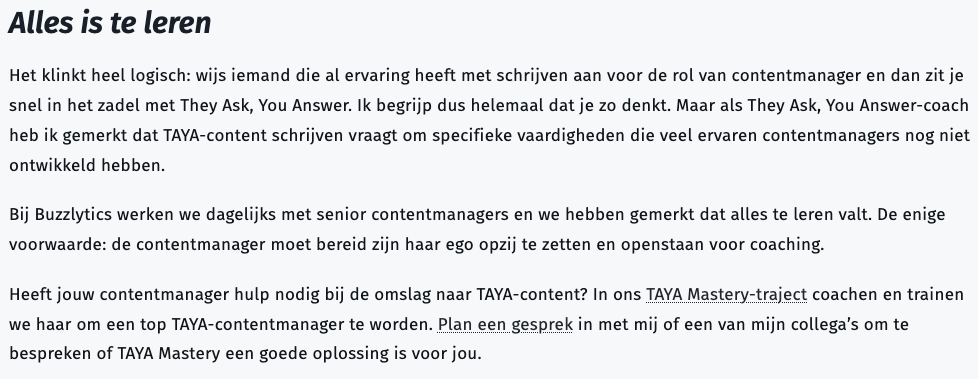
Writing a blog post will be a piece of cake from now on
Writing an effective blog post does not have to be difficult or time-consuming, as long as you have a clear plan and use the right methods.
By choosing the right topic, filling out the content compass, and following the PEP method and the 4Rs method for your introduction and conclusion, you will ensure that your article resonates with your reader and that he finds in your article what he was looking for.
At Buzzlytics, we teach content managers in our TAYA Mastery course to write their blog posts this way, and we see time and again that these blog posts bring in traffic, leads and sales.
Want to learn more about what writing according to They Ask, You Answer means and what skills you need as a content manager to do so? Then read our article Can every senior content manager be a TAYA content manager?
Have fun blogging!
Related articles
March 18, 2024
-
Reading time: +/- 5 min
September 19, 2024
-
Reading time: +/- 7 min
February 13, 2025
-
Reading time: +/- 7 min
